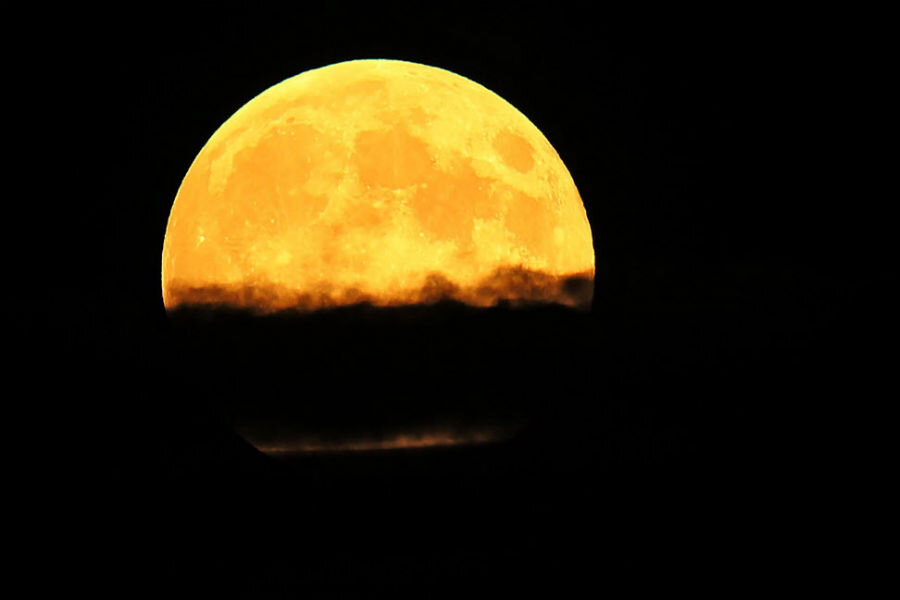'Harvest supermoon': From Sydney to Chicago, people tweet their photos
Loading...
A rare lunar magic trick stole the night sky Monday, as the so-called harvest supermoon wowed Earthbound stargazers from Sydney, Australia, to Chicago.
A supermoon is an illusion of perspective presented by overlaps in the lunar orbit and the phases of the moon. A few times every year, the full moon occurs at the same time as the perigee, the point in the moon's orbit that comes nearest to Earth. When this happens, the moon appears 13 to 14 percent larger and 30 percent brighter than a typical full moon, according to NASA.
Supermoons aren't always as noticeable as they have been this year: They can be obscured by cloud cover. People who are unaware of the phenomenon might not think much about a moon that seems slightly bigger and brighter. But the rise of the camera phone has made it easier for people to share such sights with one another and compare notes.
Spectacular photos of a supermoon in 2013 caught the attention of the media, which have since spread the word about subsequent supermoons.
While two other supermoons produced "ahs" around the globe this summer, this third and final supermoon of the year outshined its predecessors by taking the stage at the same time as the annual harvest moon.
The harvest moon occurs once a year around the autumnal equinox and is bigger, brighter, and more reddish than a typical full moon. Throughout most of the year, the moon rises about 50 minutes later each day than it did the day before. Around the autumnal equinox, that difference diminishes, in effect bridging the darkness between twilight and moonrise. For agricultural communities, especially before the advent of electricity brought field lights, those few extra minutes were vital in bringing in the harvest. Many cultures have historically held festivals under the light of the harvest moon to celebrate the bounty of the harvest.
The convergence of the two lunar phenomena resulted in nothing short of a celestial feast for sky-watchers and amateur photographers. Around the world, people took to social media to share their views of the spectacle.
Chicago-based landscape photographer Barry Butler captured the salmon tint of the harvest moon, made bolder and brighter by the occurrence of the supermoon.
This spectacular photo shows another trick of the moon. On any given night, the moon appears larger when it is low in the sky. Astronomers refer to the effect as the “moon illusion.”
Catch the moon illusion during a supermoon that features the reddish tint of the harvest moon, and the results are breathtaking.
Several Twitter users had some fun creating their own optical illusions.
.






